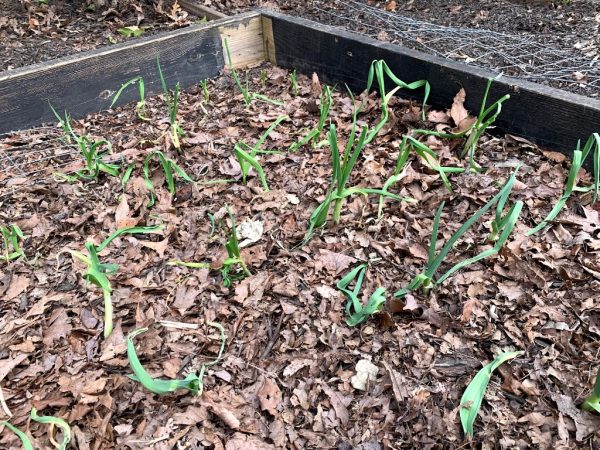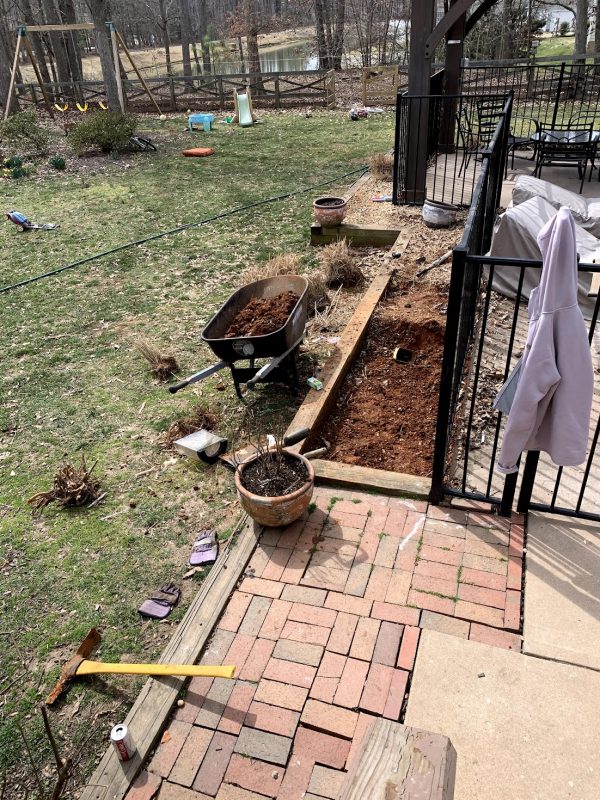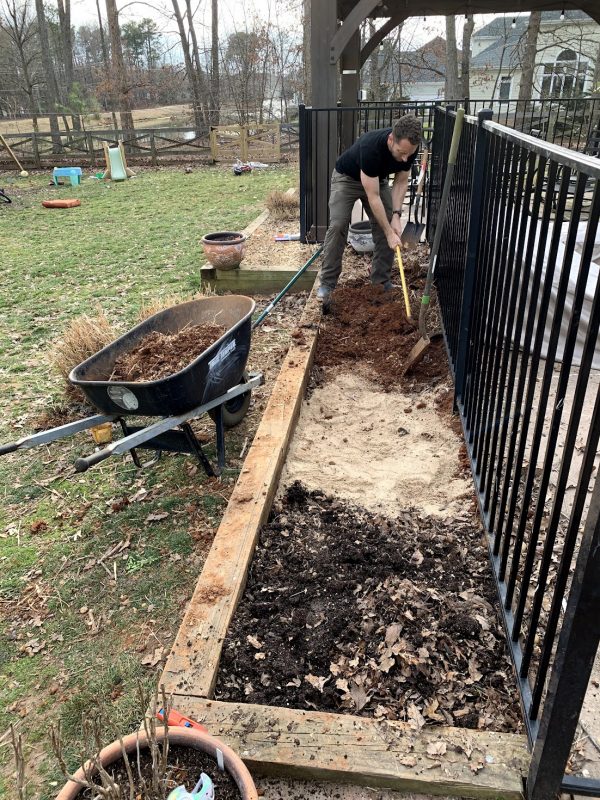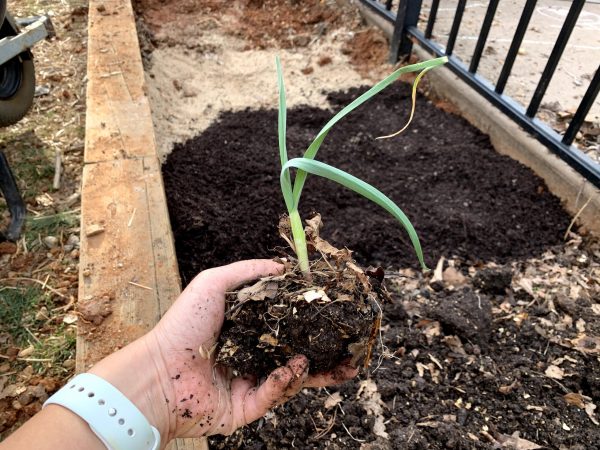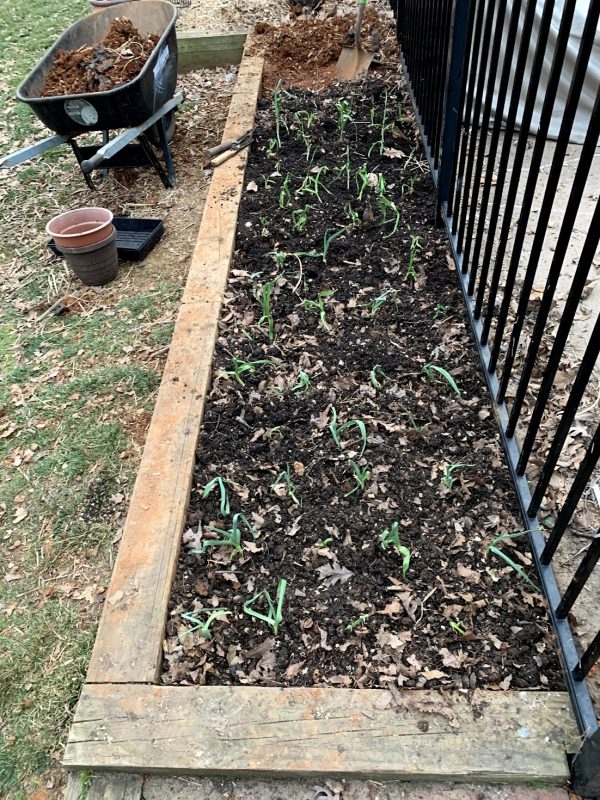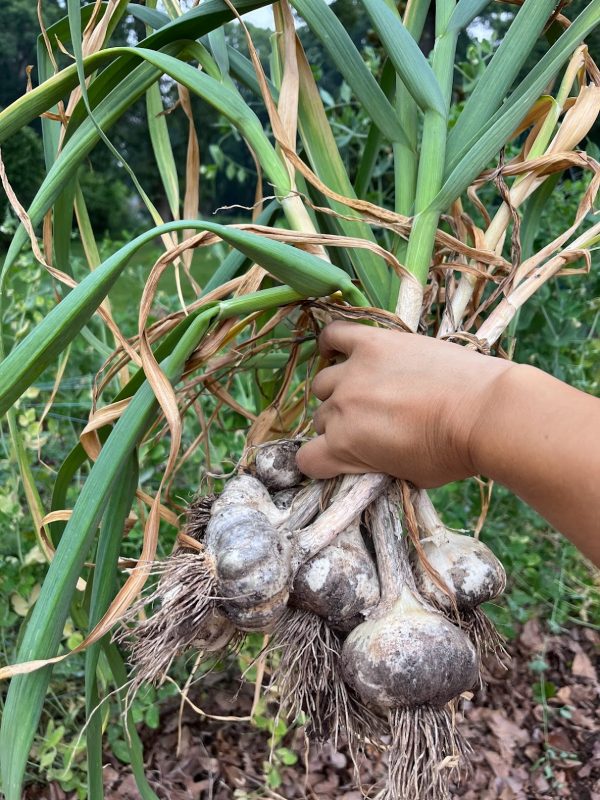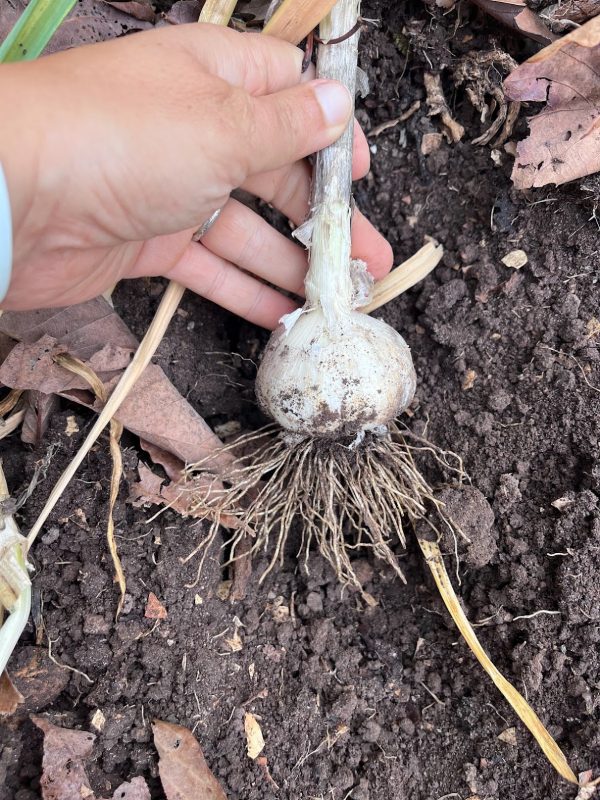Hello! If you are reading this, it’s likely that you found this post from it’s very SEO-friendly title.
If you find yourself in the position of having to transplant a bunch of garlic that you lovingly planted months ago, YOU ARE IN THE RIGHT PLACE.
In the fall of 2019, I read garlic-planting instructions that included a post-script noting that the garlic will be the first green shoots to appear in the spring, and the first thing you’ll harvest in the summer, giving you the exact boost you need to move forward with the hope and energy required to start a vegetable garden.
That’s awesome advice. It’s what I’ve experienced in my short tenure growing garlic. The incredible part is that you leave the garlic alone. You don’t trim, fluff, edit. You just plant the garlic and walk away. VIOLA!
So why are we transplanting garlic? Great question. You only transplant garlic if you absolutely have to.
In our case it was because we had to move our chicken coop. I’m not going to talk about why we had to move our chicken coop here, because this intro is already five paragraphs (and counting!) too long. But the TLDR is this: we had to move the chicken coop and the only place it could go was where I my garlic was sleeping, nowhere near ready to harvest.
Exhibit A: my garlic happily waiting to be harvested in like three months. It has no idea what’s coming.
I’m on the other side of this now, and I can report that the transplanting was successful! So if you find yourself in a situation where you also need to transplant garlic months AFTER planting it but BEFORE you’re ready to harvest, you’ve come to the right place.
STEP ONE: I can’t think of any good reason to move garlic, so you’re probably starting this project mad. That’s good. Use that. The first step in this process is to harness your annoyance.
STEP TWO: Prepare the new bed. This is like when your kid falls asleep in the car, you have to move them from place to place as quickly eliminating as much disturbance as possible. With that in mind, have the bed ready.
This is our spot. We had to remove a bunch of ornamental grass and a LOT of rocks. This part was the most work-intensive for us; hopefully it won’t be for you.
After removing all that junk, we added a layer of sand, some organic soil, and a lot of compost. In this photo you can see Tom working on removing some clay and rocks, the some sand, and in front of that is a section I’ve already added dirt and compost to.
Garlic feeds heavily, so go crazy with compost. Leaves, organic matter, all of it. There’s no such thing as too much.
STEP THREE: Prepare your babies. Tell them to be brave, everything will be fine.
My process here was to try to dig up the garlic with a handful of surrounding dirt. This didn’t always work because the dirt easily fell away. I tried to be extra careful with these guys. But even if there was just a little ball of dirt, I didn’t shake it off because I was taking great pains to not disturb any roots.
This is a great clump — it didn’t even know it got moved.
STEP FOUR: And repeat, over and over and over. With gentleness and affection. Don’t grow tired, and do not, under any circumstances, consider the fact that you’re spending 12 hours clearing a bed to transplant something like $3.50 of garlic.
That’s not what this is about. Remember? We’re mad.
Mix in lots of organic material — I like to add 2-3 inches of shredded leaves.
And done! look at that, a happy bed of garlic.
STEP FIVE: …several months later…REJOICE! It worked! Against all odds, your garlic, planted with hope and then re-planted in frustration, made it! HUZZAH! Now on to drying and braiding!
In summary, in case you got lost in all that editorializing, you can successfully transplant your garlic halfway through the season! Just prepare a nice nutrient-rich bed with lots of drainage. Move each garlic sprig with as much surrounding dirt as possible, taking care to avoid disturbing any roots. After planting, cover with several inches of shredded leaves or other mulch. Harvest in a few months!
